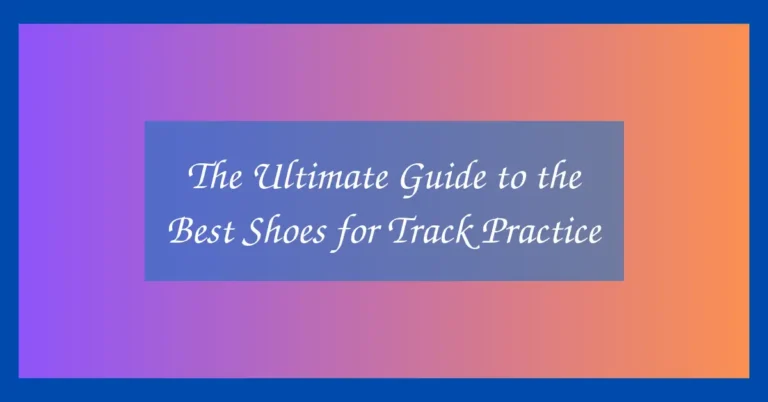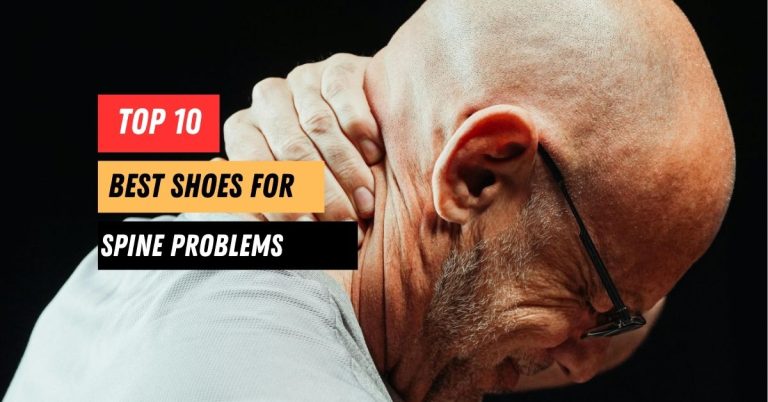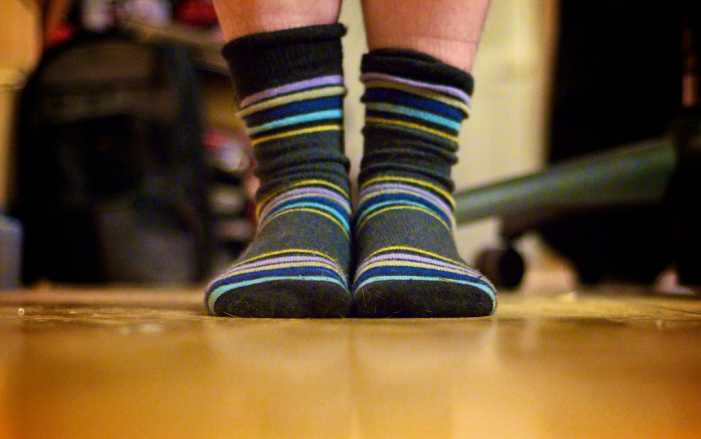10 Best Affordable Stability Running Shoes
Finding the best affordable stability running shoes can feel overwhelming, especially with the wide variety of models designed to support overpronation and enhance running comfort. This guide narrows the choices by focusing on shoes that combine support, cushioning, and long-lasting comfort without requiring a premium budget. Whether you’re an experienced runner or a beginner seeking reliable support, this list highlights models built to enhance stability and reduce fatigue. Each product review focuses on real-world performance, durability, and how well the shoe maintains alignment during runs. By the end, you’ll have a strong grasp of which models deliver the best value for stability-focused runners.
Stability running shoes have evolved significantly, offering runners better motion control, improved cushioning foams, and enhanced fit technologies. Brands now produce lightweight designs that still support proper alignment, making them ideal for long miles or everyday training. In this first half of the guide, you’ll find five highly rated and budget-friendly options known for dependable performance. These models serve various runner types, from mild overpronators to heavier runners needing additional structure. Each review aims to help you decide which features matter most for your running style.
Top 10 Best Affordable Stability Running Shoes Reviewed
1. ASICS GT-2000 11
The ASICS GT-2000 11 remains a staple for runners who need moderate stability without bulk. Its engineered mesh upper provides breathable comfort and a secure hold, which helps reduce foot movement during longer training sessions. The midsole incorporates soft cushioning that absorbs impact and keeps transitions smooth. Despite its lightweight feel, the shoe’s support system helps guide the foot naturally through each gait cycle, making it ideal for daily training.
One standout feature is how consistent the shoe feels over time, even after extended use. The stability elements do not feel intrusive, allowing runners to enjoy a balanced ride that still counters overpronation. Its outsole grips well on pavement, treadmill surfaces, and light park paths. Runners often appreciate the added heel structure, especially during fatigued miles when form tends to break down.
This updated version improves step-in comfort and offers slightly more forefoot cushioning. That enhancement helps reduce pressure under the toes and ball of the foot, making longer runs more manageable. The shoe also remains flexible enough for short, quicker-paced sessions. For runners wanting stability with a responsive feel, it’s an excellent value.
Overall, the GT-2000 11 provides an effective blend of structure, cushioning, and durability. It supports neutral and mild-overpronating runners while staying comfortable for daily use. Its design remains versatile, performing well for both short and long sessions. The supportive midsole geometry continues to make this model a dependable pick for cost-conscious runners.
Pros
- Reliable moderate stability
- Comfortable cushioning for daily miles
- Breathable and secure upper
Cons
- Fit may feel narrow for wide feet
- Cushioning feels firm to some runners
2. Brooks Launch GTS 10
The Brooks Launch GTS 10 brings lightweight stability to runners seeking a faster feel. It features a streamlined upper that molds well to the foot without adding unnecessary materials. The supportive GuideRails system stabilizes the foot by controlling excess movement, especially during long or fast-paced workouts. Despite its stability components, the shoe still feels agile and flexible.
Runners who enjoy a firmer, more responsive ride will appreciate the shoe’s midsole design. It offers enough cushioning for daily use but remains energetic for tempo sessions or quick jogs. The outsole holds up well against abrasion, making it suitable for frequent pavement running. Additionally, the shoe’s breathability helps maintain comfort on warm days.
The Launch GTS 10 stands out for its ability to balance speed and support. It does not feel heavy or restrictive, making it ideal for runners who prefer a natural underfoot feel with just a touch of guidance. The upper accommodates most foot types, offering a comfortable fit without feeling sloppy. Its combination of stability and responsiveness makes it an appealing budget-friendly trainer.
Its overall durability makes it a strong choice for runners who rotate between multiple shoes. The midsole maintains its responsiveness even after extended use, helping to preserve the shoe’s lively feel. Runners who want a stable daily trainer that can handle speed workouts will find great value in this model. For the price, it delivers impressive versatility.
Pros
- Lightweight with mild stability
- Responsive midsole for quicker runs
- Breathable and durable upper
Cons
- Firmer ride not ideal for long-distance cushioning
- Less structured than heavier stability shoes
3. Saucony Guide 16
The Saucony Guide 16 offers soft cushioning combined with dependable stability, making it suitable for everyday runs. Its upper is plush yet supportive, hugging the foot comfortably without restricting movement. The midsole foam delivers smooth transitions and reduces harsh impact during longer outings. Runners who want stability without a bulky feel often appreciate how balanced this model is.
One of the shoe’s strengths is its adaptability to various running styles. Whether you run at an easy pace or push slightly faster speeds, it maintains a stable platform. The outsole provides reliable traction on most surfaces, and the flexibility of the forefoot encourages natural movement. Many runners report that the shoe feels immediately comfortable right out of the box.
The Guide 16 works well for mild to moderate overpronators seeking a dependable trainer. Its cushioning remains consistent even after months of use, helping to maintain comfort throughout its lifespan. The heel counter enhances control, especially during downhill efforts. This combination of stability and cushioning makes the shoe ideal for runners with varying weekly mileage.
Its overall design encourages confidence during long, steady runs by guiding the foot through a smooth heel-to-toe transition. The supportive midsole structure reduces fatigue on the ankles and knees. This model is especially appealing for runners who prioritize comfort without sacrificing stability. It represents excellent value in the stability category.
Pros
- Soft and balanced cushioning
- Stable platform for various paces
- Excellent out-of-the-box comfort
Cons
- May feel warm in hot climates
- Forefoot may feel slightly snug to some
4. New Balance 860v13
The New Balance 860v13 offers structured stability ideal for runners needing firmer support. Its dense medial post helps guide overpronating feet into proper alignment, making it ideal for high-mileage training. The cushioning feels protective underfoot while remaining responsive enough for everyday running. Its engineered upper provides a secure fit that feels stable without being rigid.
The updated cushioning enhances comfort during long runs, absorbing shock efficiently on varied surfaces. The shoe’s outsole features durable rubber designed to withstand repeated pavement pounding. Many runners appreciate its combination of firmness and comfort, ideal for preventing fatigue over long distances. Its overall construction feels solid and dependable.
The 860v13 is especially beneficial for runners who struggle with knee or ankle discomfort due to instability. The shoe’s supportive structure helps maintain proper gait throughout each run. Its weight is slightly higher than lightweight stability models, but the added support often justifies this trade-off. The upper keeps the foot locked in without creating pressure points.
Runners seeking a traditional, well-structured stability shoe will find the 860v13 dependable and long-lasting. It excels as a daily trainer for those who need maximum control. The shoe also adapts well to both slow and moderate paces. Overall, it stands out as one of the most consistent stability shoes available at an affordable range.
Pros
- Strong stability with medial post
- Durable and supportive build
- Comfortable cushioning for long miles
Cons
- Heavier than other stability models
- Firmness may not suit soft-cushion seekers
5. HOKA Arahi 6
The HOKA Arahi 6 brings lightweight stability through its unique J-Frame design, which guides the foot without using traditional posting. This approach results in a smoother, less intrusive stabilizing experience. The shoe’s cushioning feels soft yet stable, ideal for long runs and recovery days. Its wide base helps create a confident, grounded feel.
Many runners appreciate how the Arahi 6 maintains a plush ride without sacrificing support. The upper is breathable and comfortable, reducing irritation during hot-weather runs. Its early-stage rocker helps promote efficient forward motion, especially useful for runners with slower cadences. Even with its supportive features, the shoe remains surprisingly light.
The outsole provides durable traction, and the midsole retains its cushioning longer than many similarly priced stability shoes. The Arahi 6 also accommodates wider foot shapes due to its roomy forefoot. Despite being stability-focused, it suits neutral runners who want extra guidance. Its smooth transitions make daily training enjoyable.
Overall, the Arahi 6 excels as a comfortable, lightweight stability option for budget-conscious runners. Its combination of plush cushioning and structured support achieves a well-balanced ride. Whether you’re training for long distances or using it as a reliable daily runner, it performs consistently. Many runners consider it one of the most comfortable stability shoes available for its category.
Pros
- Lightweight stability without harsh posting
- Soft yet supportive cushioning
- Very comfortable for long runs
Cons
- Rocker shape may take time to adjust to
- Less responsive for fast workouts
6. Mizuno Wave Inspire 19
The Mizuno Wave Inspire 19 offers a dependable blend of cushioning and stability, making it ideal for runners who need consistent support. Its Wave Plate technology helps guide the foot through a smooth transition while reducing excessive inward rolling. The midsole foam feels protective without being overly soft, giving the shoe a balanced underfoot sensation. Many runners find the Inspire 19 reliable for daily training and longer steady runs.
The upper provides a secure midfoot wrap that enhances stability without feeling restrictive. Breathable mesh allows comfortable airflow during warm-weather sessions. The shoe’s construction focuses heavily on alignment, ensuring that runners maintain efficient form even as fatigue builds. Its heel design offers a locked-in feel that reduces unwanted shifting.
The Inspire 19 is well-suited for moderate overpronators seeking a structured ride. The outsole’s durability makes it ideal for runners who frequently log miles on pavement. Its geometry favors predictable performance, which many appreciate during repetitive training weeks. Flex grooves in the forefoot add a touch of natural movement without compromising support.
Overall, the Wave Inspire 19 delivers a consistent, trustworthy feel that many runners rely on for everyday mileage. Its combination of protective cushioning, structured stability, and durable construction creates strong value. The shoe’s predictable ride makes it an excellent option for those who prefer a traditional stability trainer. Runners seeking comfort paired with long-lasting support often find it a great match.
Pros
- Reliable Wave Plate stability
- Durable outsole for high mileage
- Protective yet balanced cushioning
Cons
- May feel firm to soft-cushion fans
- Slightly heavier than newer designs
7. Nike Structure 25
The Nike Structure 25 focuses on delivering smooth stability through a cushioned and controlled ride. It features a supportive midsole setup designed to limit overpronation while providing soft impact absorption. The upper wraps the foot securely, giving runners confidence during longer sessions. This model is ideal for those seeking a stable yet modern-feeling daily trainer.
Runners appreciate the Structure 25’s plush padding around the heel and tongue, which reduces irritation during extended runs. The shoe also offers a stable landing platform that helps runners maintain proper alignment. Its forefoot flex creates a natural toe-off, adding comfort during transitions. The overall experience remains soft yet structured.
The outsole uses durable rubber that performs well on varied surfaces, especially road and treadmill. Many runners find the midsole thickness supportive during recovery runs, where stability and comfort are essential. Its supportive frame does not feel intrusive, making it suitable for mild to moderate overpronators. The shoe’s ride stays consistent for many miles, enhancing long-term value.
With its balanced mix of cushioning, structure, and comfort, the Structure 25 stands out as a dependable choice for budget-focused runners. The secure upper fit adds confidence during tired miles, and its smooth transitions make everyday running enjoyable. Runners who want a soft but supportive trainer will find this model appealing. Overall, it offers stability without sacrificing plushness.
Pros
- Soft, stable cushioning
- Durable and versatile outsole
- Supportive upper with excellent comfort
Cons
- Slightly heavier than some competitors
- Not ideal for fast paces
8. Adidas Adizero Tempo 9
The Adidas Adizero Tempo 9 offers lightweight stability for runners seeking a faster yet supported feel. The midsole uses energetic cushioning that adds responsiveness during tempo or interval sessions. Despite its speed-oriented design, it incorporates mild stability elements to reduce excessive rolling. This combination makes it a great all-rounder for speed-focused runners who still need structure.
The upper delivers a snug, breathable fit suited for quicker training days. The shoe hugs the foot closely without causing discomfort, making it ideal for performance-oriented running. Its outsole provides strong grip and holds up well over time, even with frequent high-intensity sessions. Flexibility in the forefoot enhances natural movement.
The Tempo 9 excels for runners who want stability without sacrificing a lightweight feel. Its cushioning remains protective during longer distances while still supporting efficient turnover. Many runners enjoy using it for races, tempo runs, and moderate-distance daily runs. It bridges the gap between neutral speed shoes and heavier stability trainers.
Its versatility and lively ride make the Tempo 9 a strong value choice for runners wanting a supportive performance shoe. The stable platform adds confidence at high speeds, while the cushioning supports tired legs during long workouts. It retains responsiveness longer than many similarly priced shoes. Overall, it remains a favorite among stability runners wanting speed.
Pros
- Lightweight with mild stability support
- Responsive midsole for speed work
- Durable and grippy outsole
Cons
- Snug upper may feel tight for wide feet
- Less cushioning for long recovery runs
9. On Cloudrunner
The On Cloudrunner provides mild stability through its uniquely designed midsole pods and broad base. The shoe focuses on offering a guided, cushioned ride that feels supported without relying on heavy posts. Its upper delivers a plush, structured fit, making it comfortable for long durations. Runners often appreciate how grounded and balanced the shoe feels.
The Cloudrunner’s cushioning feels soft upon landing yet firm enough to maintain alignment. Its outsole pods help absorb impact while promoting stable transitions. Many runners enjoy the shoe’s smooth ride, which suits both casual daily runs and extended training sessions. The upper materials enhance breathability, adding comfort during warmer runs.
The wide platform improves stability during side-to-side movements and helps reduce fatigue over long runs. This makes it especially beneficial for runners who experience ankle wobbling or inconsistent gait patterns. The shoe also offers reliable traction on most running surfaces. Its durability contributes to long-term value for budget-conscious runners.
Overall, the Cloudrunner offers a unique stability experience with a soft yet structured feel. Its midsole design provides gentle guidance that suits both neutral runners and mild overpronators. The comfortable upper and wide base make longer miles more enjoyable. For runners seeking a fresh take on stability without bulky designs, this shoe is a standout pick.
Pros
- Wide, stable platform
- Soft yet supportive cushioning
- Comfortable and breathable upper
Cons
- Heavier feel due to pod construction
- Rocker feel is less pronounced than other brands
10. Puma Axelion NXT
The Puma Axelion NXT offers stylish, affordable stability for runners and fitness enthusiasts. Its design blends sporty aesthetics with functional support, making it a versatile choice for both running and gym training. The midfoot strap and secure upper help provide added stability during movement. Runners appreciate how supportive the shoe feels without being overly restrictive.
The cushioning is firm yet protective, offering comfort for short to moderate runs. The outsole features durable rubber that performs well on various surfaces, including pavement and indoor tracks. The structured heel enhances rearfoot stability, reducing unwanted movement during longer workouts. This model is especially appealing for runners seeking a stylish option that still provides guidance.
The Axelion NXT also excels in versatility, performing well for light jogging, fitness classes, and daily wear. Its breathable upper keeps the feet cool, while the design supports natural transitions. The shoe maintains its structure over time, offering long-term value for budget-minded runners. Its wide fit accommodates a variety of foot shapes.
Overall, the Puma Axelion NXT delivers an appealing blend of stability, comfort, and affordability. While not as cushioned as premium running models, it offers excellent stability for light to moderate mileage. Its stylish look makes it ideal for runners who want a shoe that performs well and pairs with casual wear. For the budget category, it stands out as a solid stability option.
Pros
- Supportive midfoot and heel design
- Durable outsole for varied use
- Stylish and versatile for running and training
Cons
- Firmer cushioning than true running shoes
- Not ideal for long-distance sessions
| Product Name | Stability Level | Cushion Feel | Best For | Key Feature |
|---|---|---|---|---|
| ASICS GT-2000 11 | Moderate | Balanced | Daily training | Guided gait support |
| Brooks Launch GTS 10 | Mild | Firm | Faster runs | GuideRails stability |
| Saucony Guide 16 | Moderate | Soft | Steady mileage | Smooth transitions |
| New Balance 860v13 | High | Firm | Long-distance support | Medial posting |
| HOKA Arahi 6 | Moderate | Plush | Long runs | J-Frame stability |
| Mizuno Wave Inspire 19 | Moderate | Balanced | Daily mileage | Wave Plate control |
| Nike Structure 25 | Moderate | Soft | Recovery and daily runs | Stable landing platform |
| Adidas Adizero Tempo 9 | Mild | Responsive | Tempo sessions | Lightweight stability |
| On Cloudrunner | Mild | Soft | Daily comfort | Wide stable base |
| Puma Axelion NXT | Mild | Firm | Short runs & training | Midfoot strap support |
Best Affordable Stability Running Shoes: Buying Guide
Understand Your Stability Needs
Before choosing a pair of stability running shoes, it’s essential to understand your level of overpronation. Mild overpronators may only need subtle guidance, while moderate to heavy overpronators often benefit from firmer midsoles or structured support features. Determining your pronation pattern helps narrow your options. This ensures you select a pair that enhances your alignment and running efficiency. Proper stability will also reduce fatigue over longer distances.
Consider Cushioning Preferences
Cushioning plays a major role in comfort, especially on longer runs. Some shoes offer plush, soft cushioning ideal for recovery days, while others provide a firmer, more responsive ride suitable for speed work or daily training. Choosing the right cushioning depends on your running goals and comfort preferences. Those prone to joint discomfort may prefer softer midsoles. Runners seeking performance and efficiency often choose firmer cushioning.
Upper Fit and Lockdown
A secure upper fit is crucial for stability shoes because it keeps the foot properly aligned throughout the gait cycle. Look for breathable mesh uppers that provide both flexibility and structure. Well-designed heel counters also help maintain stability, especially during longer runs when the form may break down. The right fit should feel supportive but never restrictive. Runners with wider feet should check for wide sizing options.
Durability and Outsole Performance
Durability is especially important for runners who frequently log miles on pavement. High-abrasion rubber outsoles extend the life of the shoe and maintain grip on different surfaces. A stable outsole design enhances traction during wet or uneven runs. Checking durability reviews can help you choose models that withstand heavy usage. Long-lasting traction ensures consistent performance throughout the shoe’s lifespan.
Weight and Flexibility
Stability shoes vary widely in weight, with some offering lightweight guidance while others prioritize structured support. Runners seeking versatility may prefer lighter models that feel faster and more nimble. On the other hand, heavier shoes often provide stronger stability ideal for significant overpronation. Flexibility in the forefoot also affects how natural the stride feels. Choose a shoe that balances stability with the ride experience you prefer.
Breathability and Comfort
Comfort is tied closely to breathability, especially during warm-weather running. Shoes with breathable mesh uppers help keep the foot cool and reduce irritation over long distances. Padding around the heel and tongue can further improve comfort. Finding a shoe that remains comfortable across various running conditions helps ensure long-term satisfaction. Always consider comfort as a top priority when choosing stability shoes.
FAQ
Do stability running shoes help with knee pain?
Stability running shoes can help reduce knee pain if the discomfort stems from overpronation. By guiding the foot into proper alignment, these shoes reduce stress on the knees during each stride. Many runners experience relief once switching to shoes that match their gait mechanics. However, knee pain can have various causes, so proper evaluation is recommended. Stability shoes are a helpful tool but not a universal solution.
Are stability shoes only for overpronators?
Stability shoes are primarily designed for overpronators, but neutral runners can also benefit from them. Runners who experience fatigue-induced instability often find the added structure useful on longer runs. Some models provide mild stability that doesn’t interfere with a neutral gait. It’s more about choosing what feels supportive for your running style. The right stability level can enhance comfort for many athletes.
Can I use stability running shoes for walking?
Yes, stability running shoes are excellent for walking because they offer support, cushioning, and alignment. Walkers who overpronate may find the added stability particularly beneficial. The cushioning helps absorb impact during long walks, making them comfortable for daily wear. Many people use stability running shoes as their primary walking shoes. They are versatile for various low-impact activities.
How long do stability running shoes typically last?
Most stability running shoes last between 300 and 500 miles, depending on running habits and shoe construction. Heavy runners or those consistently running on pavement may experience faster wear. Monitoring outsole and midsole compression is the best way to know when replacement is needed. If the shoe feels less supportive or uneven underfoot, it’s time for a new pair. Regularly rotating shoes can help extend their life.
Are stability shoes good for beginners?
Stability shoes can be very helpful for beginners who need extra guidance while developing their running form. They provide support that reduces fatigue and helps maintain alignment during early training. Beginners often appreciate the added cushioning and structure. Choosing a mild or moderate stability shoe is usually best for new runners. This ensures a supportive yet comfortable introduction to running.
Can stability shoes be used for speed training?
Many stability shoes work well for speed training, especially lightweight models with mild stability. Shoes like these provide enough guidance without feeling heavy or restrictive. However, heavily structured stability shoes may feel too firm or bulky for fast intervals. Runners focused on speed may benefit from a more responsive, lighter model. Choosing the right balance of stability and responsiveness is key.
Verdict
The best affordable stability running shoes combine comfort, alignment support, and durable construction without exceeding your budget. Whether you need mild or moderate guidance, the models reviewed here offer strong performance for daily training and long-distance running. By focusing on fit, cushioning, and stability level, you can confidently choose a shoe that enhances both comfort and efficiency on every run.







